Creating the Future of Agriculture
with Sony's Sensing Technology

From the perspective of "Co-Creation," the "SESSIONS" series features dialogues that introduce the activities of Sony's diverse employees to create Kando, based on Sony's Purpose to "fill the world with emotion, through the power of creativity and technology." Through conversations between Sony employees and our various partners, this series gives a candid look at scenes from real Sony projects, demonstrating what kinds of "Co-Creation" are enabled by the combination of Sony's creativity and technology with the efforts of business partners and creators, and what kind of Kando these initiatives spread around the world.
In this Session installment, we cover a joint research project between Sony and Hokkaido University that got off the ground in 2020. We asked about the initiatives that Sony and Associate Professor Yoshitaka Uchida, who is engaged in research at Hokkaido University with a specialization in environmental biochemistry, are pursuing in order to realize regenerative agriculture, as well as about the sustainable future that they are aiming for by taking advantage of the Sony's "Earth MIMAMORI platform" (*1) that utilizes sensing, big data analysis and other technologies
- *1 Sony has an internal project called the Earth MIMAMORI Platform.
[The sustained regenerative agriculture that Associate Professor Uchida is researching]
Modern agriculture significantly transforms nitrogen and carbon circulation and negatively affects the global environment. We are addressing these issues by using sensing technology and predictive analysis technology to grasp the complex circulation of nutrients in the soil, atmosphere and water areas with greater efficiency and by collaborating with farms in Hokkaido to push forward with initiatives geared towards realizing sustained regenerative agriculture that has a limited environmental footprint and takes full advantage of ecological functions. (Taken from Hokkaido University's website)
[Sony's Earth MIMAMORI platform]
This platform constitutes the realization of a mechanism that makes it possible to sense all kinds of locations across the earth. It provides the insight to allow people to take actions to develop sustainable practices. Through this, we want to make the platform a driving force for having people think about a sustainable future and take concrete action. We call this concept "MIMAMORI" in Sony's internal project. The technology serving as the key to the Sony's "Earth MIMAMORI platform" is sensing technology to monitor changes, edge AI with super-low power consumption, an ultra-wideband sensing network to relay those changes, and data analytics to clearly illustrate the trends. Aimed at a sustainable future, this project leverages Sony technology to prevent disasters and environmental destruction in order to maintain our beautiful planet. (*Summary from Sony's website)
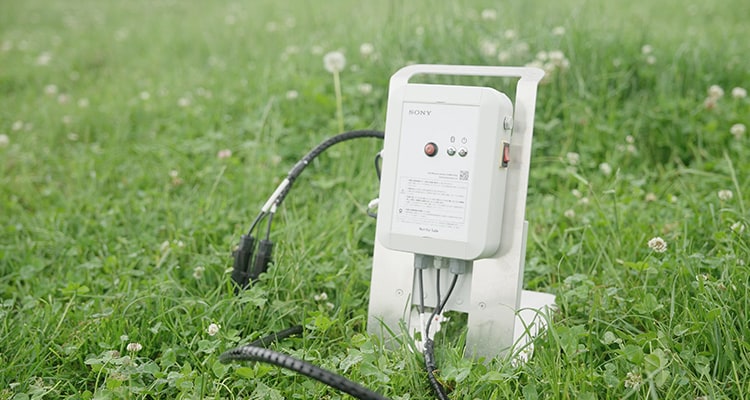
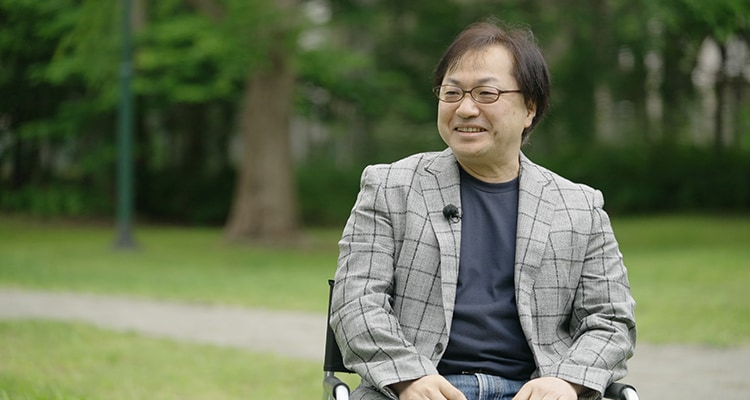
[In charge of building Earth MIMAMORI platform]
Akihiro Horii
Sony Group Corporation/R&D Center, Tokyo Laboratory 14
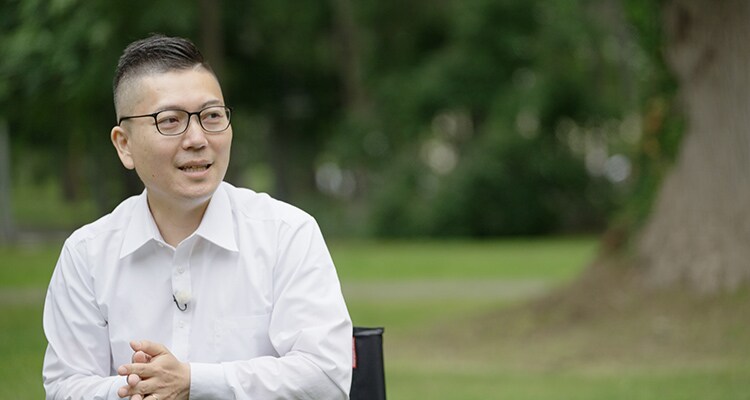
[Co-creation partner]
Associate Professor Yoshitaka Uchida
Faculty of Agriculture, Hokkaido University, Environmental Biogeochemistry Lab
Sony and Hokkaido University working jointly to tackle the resolution of global environment issues
About regenerative agriculture
——We started this session by asking Mr. Uchida why he is tackling "regenerative agriculture."
Yoshitaka Uchida: In my opinion, thinking about agriculture for the next generation is of great importance. When the generation of people that follows us is born, I fear that they may be confronting the loss of petroleum, clean water, or the ability to produce delicious food in the same way as days of old, to give some examples. The term "regenerative agriculture" has reared itself here and there in recent years. So-called "modern agriculture" as it has existed up to this point is the act of producing food with the wide use of petroleum fuel. This causes the depletion of resources. I am tackling regenerative agriculture based on my desire to enable us to somehow free ourselves of the "modern agriculture" that we have been so dependent on and the next generation to eat delicious food in the same way we have.
Gathering a sense of the state of the earth through the "Earth MIMAMORI platform"
——This endeavor with Hokkaido University is the first time for Sony to engage in joint research project with a university in a primary industrial sector such as agriculture.
The background to the co-creation is the commitment to prevention of natural disasters and environmental destruction, and the initiatives of Sony's "Earth MIMAMORI Platform" that work toward a sustainable future by leveraging Sony's cutting-edge technologies.
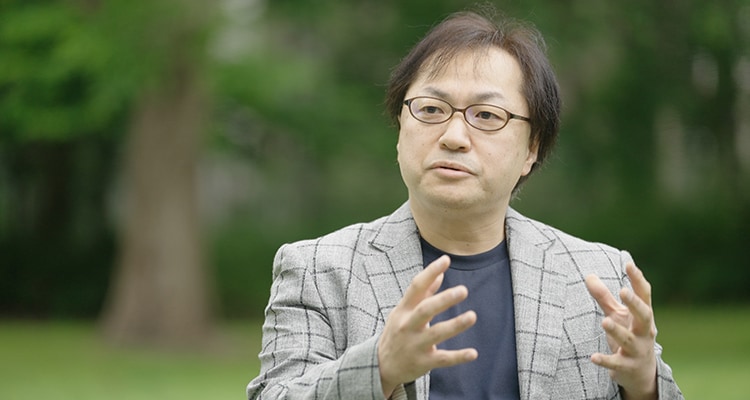
Akihiro Horii: Under the Sony's Earth MIMAMORI platform, we place sensors around the world and gather and analyze information collected using those sensors to pick up on signs. By providing that data that we analyzed to people, we have them come up with various ways of utilizing it in order leave our global environment intact for the next generation. That is the platform that I am in charge of developing.
The realization of a sustainable society and the co-prosperity of local communities
——What does regenerative agriculture entail? How will you utilize Sony's advanced technology to address the issues at hand?
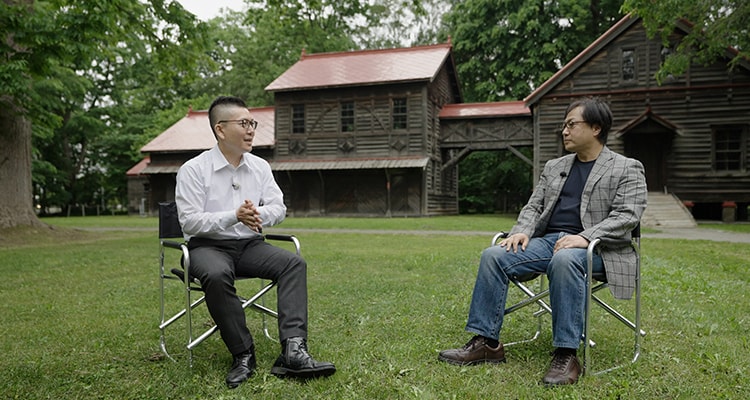
Uchida: Regenerative agriculture involves a number of concepts. One of them is what we call "soil health." Under this concept, when the soil is healthy, the people living there are healthy too, and food production there is stable and sustainable. My current research addresses how feasible the agriculture based on that concept is in Hokkaido and the rest of Japan, and how we best we should move forward with it.
Horii: Sony has developed sensor technology, including CMOS(*1) sensors, for some time now. Moreover, if combining long-distance communications technology with analysis technology that uses AI enables us to sense how soil is optimized for the environment, I believe that by quantifying those conditions and showing the resulting data to farmers, it will be possible to encourage behavioral modification among them so that they address what kind of actions should be taken next. We are a company not of farming specialists, but of developers of such technology. As such, our research theme is to work together with specialists in academia such as Mr. Uchida and with farmers to delve deeper into how we can leverage this sensing and communications technology and analysis. I believe that such collaboration will yield the answers to that question more and more as we move forward.
- *1 A semiconductor that converts light into electric signals. Said to be an "electric eye" that serves as a retina for human eyes.
Used in numerous devices, including smartphones and automobiles. Broadens the possibilities of imaging for viewing images that have been taken as well as sensing applied to acquire and utilize a myriad of information.
——We asked Mr. Uchida how soil being healthy affects our lives.
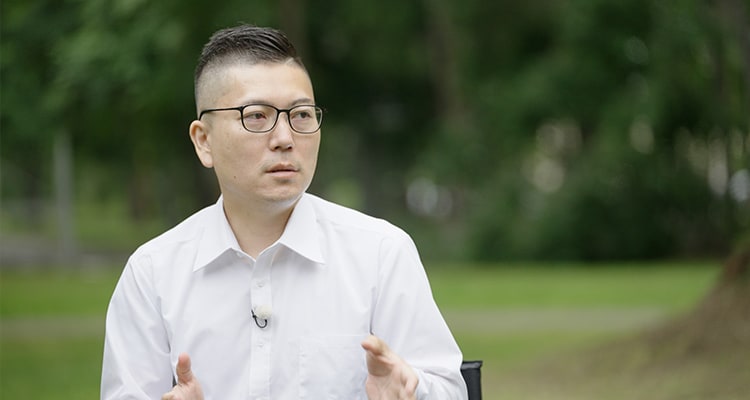
Uchida: To give an example, food grows in soil. As such, it contains various nutrients that it absorbs from that soil. In turn, we take those nutrients into our bodies and become healthy. Our skin and intestines also contain microbes that originally entered there from the outside environment, soil included, that we live in. Likewise, if microbes that keep us healthy are not present in soil, we ourselves cannot become healthy. One could also say that "soil where food that does not grow unless that soil it is fertilized" is in a state in which it cannot live without fertilizer. As such, plants have to properly take root using their own power. That, or plants and other living things that inhabit the soil have to work together to absorb nutrients on their own. Healthy soil makes that possible.
Information-gathering possibilities with the use of "ELTRES™" in communications systems
——"ELTRES™" is an IoT network service by Sony whose utilization is anticipated as a means of communication for acquiring data upon the realization of regenerative agriculture. We inquired about services that are expected to optimize production activities through data monitoring, conserve power used in operations in the agricultural and stockbreeding sectors, improve quality, and contribute to problem-solving as part of an IoT platform that connect to all things.
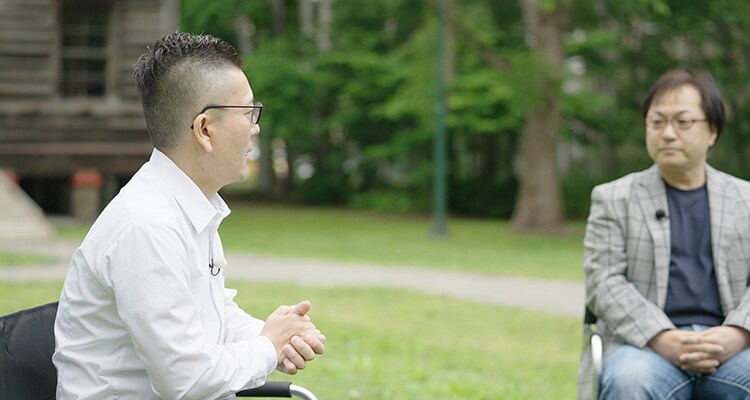
Horii: ELTRES™ only transmits small amounts of data at a time. Its defining characteristic lies in the ability to transmit data with low power consumption even over long distances. In terms of the global environment, this means that by placing various sensors in locations where there is no power source or communications infrastructure and using satellites to cover areas on the ground that cannot be reached by terrestrial receivers, we can gather sensor data from a vast area. We believe that this may make it possible for us to analyze that data and provide it to people.
Uchida: We seek to give farmers opportunities to learn and think about a variety of things through the utilization of sensing technology that can gather a myriad of data without putting a burden on those farmers. That is just how critical the current state of food production is. We have a feeling that our platform will develop into one that provides a springboard for everyone to think more, and have high expectations for it in that regard.
Horii: We want farmers to practice agriculture by thinking for themselves what actions they should take next based on data rather than on their preexisting intuition and experience. In other words, our advice is that we try building a platform that encourages behavioral modification in people. To be precise, what we are aiming for right now is a platform that goes beyond showing data in an easy-to-understand manner to have people derive ideas on what they should do next themselves. That, I feel, is the ideal shape that this platform should take.
Significance of jointly pursuing research and development
——What are your views on the significance of Sony pursing research and development alongside Mr. Uchida and Hokkaido University?
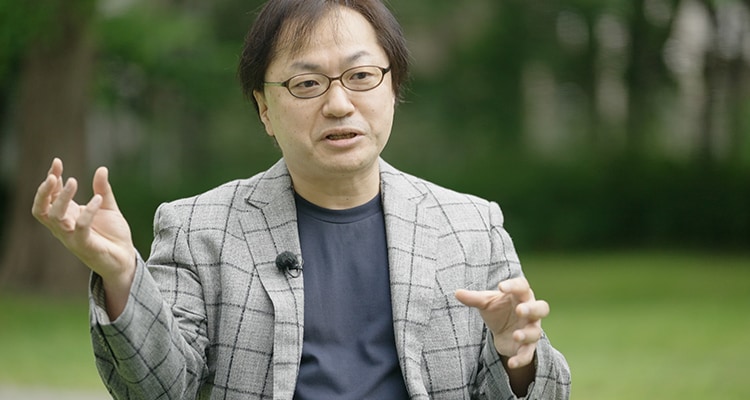
Horii: Us engaging in joint research project with Mr. Uchida is not just a matter of promoting ICT (Information and Communication Technology) for agriculture. Our ultimate goal is to go beyond that to link our efforts to regenerative agriculture. In other words, regenerating the environment is our goal. Without environmental regeneration, the entertainment that the Sony Group will provide in the future will not be valid either. Our expectations of Mr. Uchida rest on our belief that as someone engaged in matter circulation studies, he has a unique perspective that enables him to see what things should be sensed and analyzed in order to provide a springboard for regenerating the environment. We are hoping that he will quantify that matter using the sensors that we provide.
Personal visions of "Co-Creation"
——Finally, we asked both participants us what "Co-Creation" means to them.
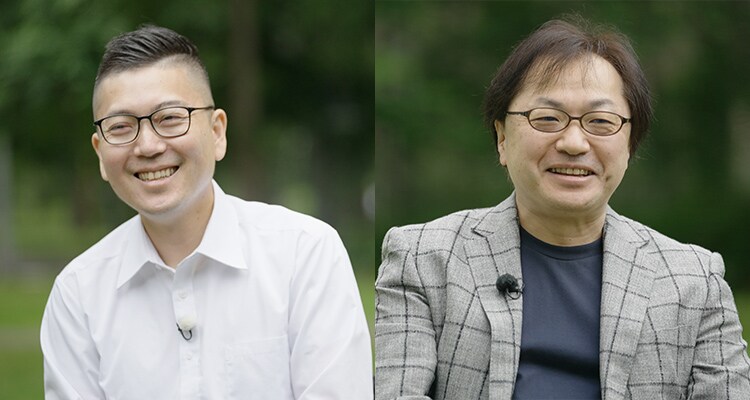
Uchida: I believe that forming the ability to see various things from multiple sides by getting to know each other is of great importance.
Horii: Co-creation as I see it is co-existence itself. In discussing a myriad of things with Mr. Uchida, I learned about how microbes and plants coexist. Giving plants nutrients allows them to give matter back. I discovered that our global environment and the world around us are founded on such a form of co-existence. For us, co-creation is the act of addressing how we will proceed to leverage the knowledge that we gained through various forms of research and technological development for the sake of the environment. Having engineers and other people with varying perspectives come together and thinking about how we will proceed to fashion the global environment and restore it together with specialists is, in my mind, both co-prosperity and co-creation.

